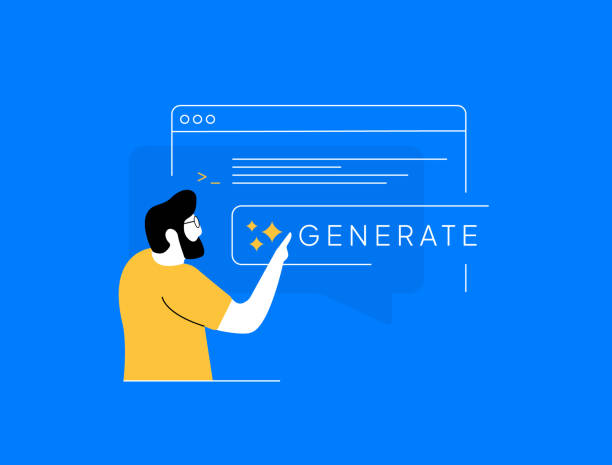Why is E-commerce Website Design Essential Today?
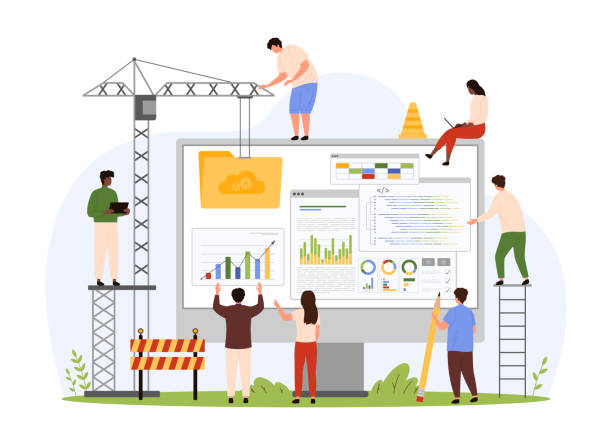
In today’s world, having a #physical_store alone is not enough for a business to succeed.
#Intense_competition and changing customer buying habits have highlighted the need for a strong online presence more than ever.
E-commerce website design is no longer a luxury option but a necessity for the survival and growth of any brand.
This online platform allows you to offer your products to millions of potential customers without geographical and time limitations.
This is a major news transformation in the way businesses operate.
#E_commerce platforms not only expand your access to a wider market but also help you build your brand, improve customer interaction, and gain valuable data on their buying behavior.
This data can be very effective in future analytical decisions.
In this educational path, we will show you how to have an efficient and attractive website that not only sells your products but also provides an unforgettable experience for customers.
This is a comprehensive explanation of the importance of entering the online world and building a professional online store that covers all aspects required for its setup and management.
In fact, building an online store is a bridge between traditional business and global markets.
Are you dissatisfied with the low conversion rate of visitors to customers on your e-commerce site?
Solve this problem forever with professional e-commerce website design by Rasawweb!
✅ Increase visitor-to-customer conversion rate
✅ Create an excellent user experience and build customer trust
⚡ Get free consultation
Key Features of a Successful E-commerce Site
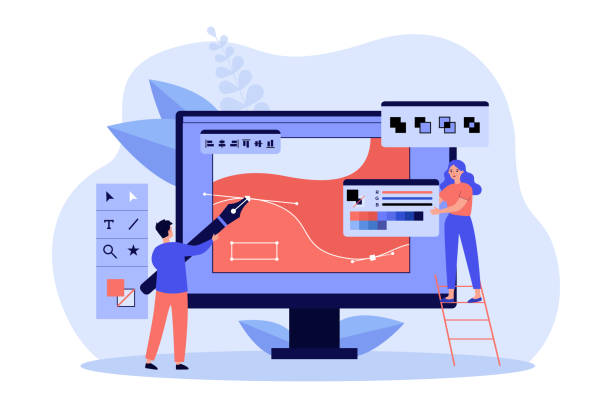
When #planning for e-commerce website design, understanding the essential features that make a successful platform is crucial.
This section is a comprehensive guide for you.
The first and most important feature is a flawless user experience (UX).
Your website should have easy navigation, an attractive visual design, and be responsive so that it displays correctly on all devices, including mobile.
High loading speed is another technical and very important factor; today’s customers have little patience, and any delay can mean a lost sale.
Inventory management system, advanced product filtering, product comparison capability, and a user-friendly and secure shopping cart are among other necessities.
Also, comprehensive descriptions and high-quality images of products, along with customer reviews and ratings, attract user trust.
Secure online payment system and diverse shipping options are also of high importance.
We want to challenge you with a thought-provoking content: Is your website capable of covering all customer needs from the moment of entry to the completion of purchase? This e-commerce website design should be such that it not only increases sales but also creates a lasting relationship with customers.
Choosing the Right Platform for Your Online Store
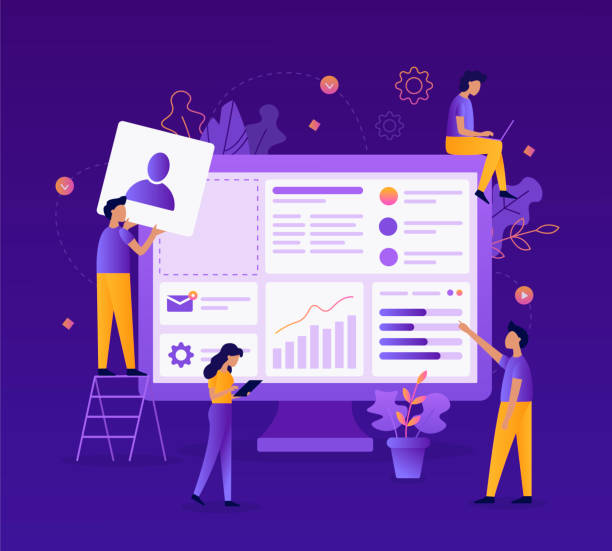
Choosing a #platform for e-commerce website design is one of the most crucial decisions you will make.
This decision will vary based on your #budget, your #technical_skills, and the scalability your business requires.
Many popular platforms exist, each with its own advantages and disadvantages.
WordPress with the #WooCommerce plugin is an excellent educational option for small to medium-sized businesses, offering high flexibility and easy customization.
#Shopify is a complete solution (SaaS) ideal for those looking for simplicity and quick setup, requiring no deep technical knowledge.
Magento is suitable for large businesses with specialized and complex needs but requires higher technical knowledge.
PrestaShop and OpenCart are also free and open-source options that offer good flexibility.
In this detailed analysis, we will guide you to make the best choice for building your online store.
Keep in mind that your chosen platform should have the ability to integrate with marketing tools, payment systems, and shipping.
A successful e-commerce website design is built on a strong foundation.
| Platform | Advantages | Disadvantages | Suitable For |
|---|---|---|---|
| WooCommerce (WordPress) | High flexibility, many plugins, full control over data, large user community | Needs hosting and maintenance, some technical knowledge, plugin costs | Small to medium-sized businesses, high customization needs |
| Shopify | Ease of use, excellent support, high security, quick setup | Monthly cost, limited control over core code, transaction fees | Startups, small to medium-sized businesses, no technical knowledge needed |
| Magento | Exceptional scalability, advanced features, high flexibility | Complexity, need for high technical knowledge, high development and maintenance costs | Large enterprises, high-volume businesses with complex needs |
Principles of Design and User Experience (UX/UI) in E-commerce Site

After choosing the platform, it’s time for #visual_design and #user_experience of the site, which play a pivotal role in the success of e-commerce website design.
A key guide: the goal is to create a visually appealing yet completely user-friendly space.
The #user_interface (UI) should be beautiful, consistent with your brand, and visually organized so that information is easily accessible to users.
But more importantly, #user_experience (UX) smooths the customer’s journey from the moment they enter the site until the purchase is completed.
This includes intuitive navigation, a simple and fast payment process, efficient product search, and optimized page load times.
#Responsive_Design, which correctly displays your site on any device from desktop to mobile, is a technical and indispensable principle.
Using high-quality images, product videos, and detailed descriptions with zoom capability helps customers make better decisions.
This section is an in-depth educational guide on the psychology of colors, space, and layout that directly affects your conversion rate.
An e-commerce website that adheres to UX/UI principles not only attracts more customers but also converts them into loyal customers.
Don’t forget, e-commerce website design is not just about aesthetics; it also depends on efficiency and performance.
Disappointed with your e-commerce site’s low conversion rate? Rasawweb transforms your e-commerce site into a powerful tool for attracting and converting customers!
✅ Significant increase in visitor-to-buyer conversion rate
✅ Unparalleled user experience to boost customer satisfaction and loyalty⚡ Get free consultation from Rasawweb!
Search Engine Optimization (SEO) for Online Store
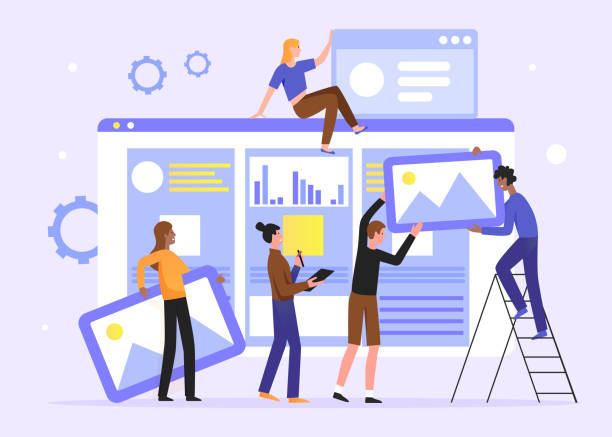
Having a #beautiful_and_efficient_website is useless without being seen by customers.
#Search_Engine_Optimization (SEO) is one of the technical and vital aspects for the success of any e-commerce website design.
The main goal of SEO is to increase your site’s ranking in Google search results and other search engines to drive more organic traffic to your #online_store.
This is a complex educational process that requires patience and persistence.
The first step is #keyword_research; identifying the phrases your potential customers use to find your products.
Then, these keywords should be strategically placed in product titles, descriptions, Meta Descriptions, Header Tags, and your blog content.
Site loading speed, mobile compatibility, and correct information architecture are also important factors in #technical_SEO.
Creating high-quality internal and external links, and producing valuable and unique content (such as blog articles, buying guides, and Q&A) helps search engines identify your site as more authoritative.
This is a continuous analytical review of your site’s and competitors’ performance.
Optimizing product images and using Alt tags for them should also not be forgotten.
Remember that #SEO is an ongoing process, and its results appear gradually.
By adhering to these principles, your e-commerce website will continuously experience more traffic and ultimately lead to increased sales.
Payment Gateways and Security in Online Store
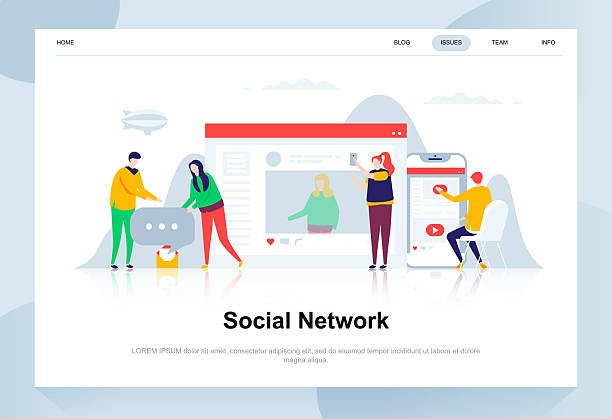
Security in #online_transactions is of paramount importance and is one of the main concerns of customers during #online_shopping.
Therefore, choosing the right #payment_gateway and ensuring the security of your e-commerce website design is a technical and indispensable priority.
A brief explanation: a payment gateway is a bridge between your website and the banking system that enables secure money payment.
You must use payment gateways that support #SSL (Secure Sockets Layer) protocol and encrypt customer bank card information.
Electronic trust symbols (e-Namad) and security certificates such as PCI DSS (Payment Card Industry Data Security Standard) are also necessities that assure customers.
Providing diverse payment options such as online payment via Shaparak cards, e-wallets, and even Cash on Delivery (COD) can improve the customer’s shopping experience.
From a thought-provoking content perspective, have you implemented all necessary security protocols to protect your customers’ data on your online sales platform? This question is vital.
Also, you must ensure that the software and plugins used on your site are up-to-date to prevent security vulnerabilities.
A secure online store not only protects customer information but also enhances your brand’s credibility and builds their trust for future purchases.
Marketing and Promotion of Online Store After Launch
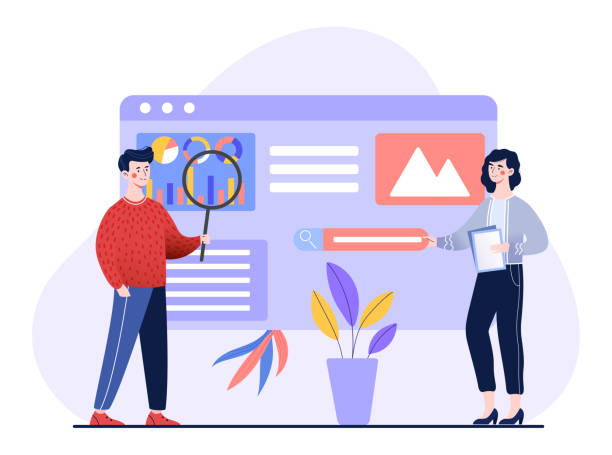
Successfully launching an #e_commerce_site is just the beginning; the next crucial and vital part is its #marketing and promotion.
This section is a comprehensive analysis of the strategies you should employ after completing your e-commerce website design.
Using #content_marketing through a blog related to your products not only helps with site SEO but also increases organic traffic.
#Email_marketing campaigns to inform about new products, discounts, and special offers are powerful tools for customer retention.
#Social_media_marketing is also an excellent channel for interacting with audiences, increasing brand awareness, and driving traffic to your online store.
Paid advertising (PPC) on Google and social networks like Instagram and Facebook can generate immediate and measurable results.
A #customer_loyalty program and offering special discounts for regular customers is an excellent way to retain them and encourage repeat purchases.
This is a fun part; you can organize online contests or challenges.
Also, collaborating with influencers and bloggers relevant to your industry can expand your reach to new audiences.
This #guide helps you formulate a multi-faceted marketing strategy for your online sales platform that not only increases sales but also solidifies your brand in customers’ minds.
| Marketing Type | Description | Advantages |
|---|---|---|
| Content Marketing | Producing valuable content such as blog articles, videos, and infographics | SEO improvement, organic traffic generation, brand credibility building |
| Email Marketing | Sending newsletters, discounts, and special offers to subscribers | Customer retention, increased repeat sales, direct customer communication |
| Social Media Marketing | Activity on platforms like Instagram, Telegram, and Facebook | Increased brand awareness, customer interaction, driving traffic to the site |
| PPC Advertising (Pay-Per-Click) | Paid advertising on Google (Google Ads) and social networks | Instant results, precise audience targeting, budget control |
Content Strategy for Product Descriptions and Blog in E-commerce Site
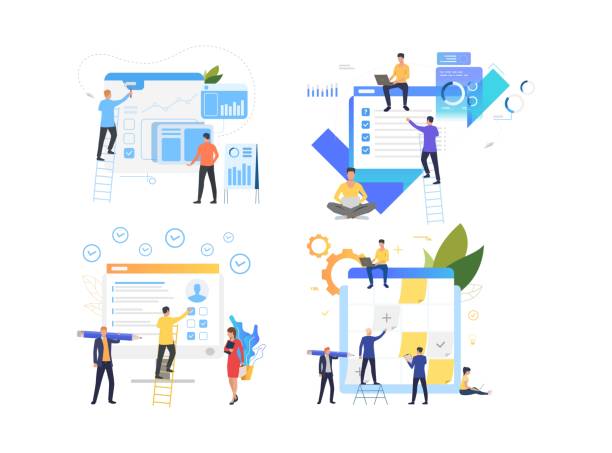
Content is king, and this principle also applies to #e_commerce_website_design.
#Content_creation for product descriptions and the blog section not only helps your site’s SEO but also assists customers in their purchasing decisions.
This is an essential educational guide for any online store.
Product descriptions should be comprehensive, accurate, and persuasive; write about features, benefits, and how to use the product.
High-quality images and videos complement textual descriptions.
Using relevant #keywords in these descriptions helps products appear better in search results.
But beyond product descriptions, having an active and content-rich #blog is an excellent opportunity to attract organic traffic and build credibility for your brand.
You can publish articles on product applications, buying guides, tips and tricks, or even entertaining content related to your industry.
A thought-provoking content in the blog can encourage users to interact and keep them on your site longer.
Answering frequently asked questions from customers in the form of blog articles not only helps them but also reduces the workload of your support team.
Your e-commerce website design should be such that it allows for easy addition and management of content.
This content strategy gives your #e_commerce_website an identity beyond just a catalog.
Are you dissatisfied with the low conversion rate of visitors to customers on your e-commerce site?
Solve this problem forever with professional e-commerce website design by Rasawweb!
✅ Increase visitor-to-customer conversion rate
✅ Create an excellent user experience and build customer trust
⚡ Get free consultation
Data Analysis and Optimization After Launching Online Store

After launching and marketing your e-commerce website design, the next stage is continuous performance analysis and optimization.
This is a technical and essential process that helps you identify the strengths and weaknesses of your online store.
Using tools like #Google_Analytics to monitor site traffic, user behavior, conversion rates, and traffic sources provides valuable information.
You can see where users come from to your site, what pages they view, how much time they spend on the site, and at what stage of the purchasing process they abandon the site.
This data helps you improve user experience, identify technical issues, and optimize your marketing strategies.
Reviewing the bounce rate, average time on page, and customer purchase paths can provide important insightful insights.
By conducting #A/B_testing on various site elements such as titles, product images, calls-to-action (CTAs), and the payment process, you can find out which changes lead to improved conversion rates.
A key #guide: Never stop optimizing.
The world of e-commerce is constantly changing, and your online sales platform must always be up-to-date to remain competitive.
E-commerce website design is a dynamic process that progresses towards perfection by collecting and analyzing data.
Inventory and Order Management in E-commerce Site

Efficient #inventory and #order management is the backbone of the smooth operation of any e-commerce website design.
This is an explanatory and very important section to ensure customer satisfaction.
An accurate #inventory_management_system helps you prevent product shortages or surpluses, both of which can harm your business.
The system should allow you to update inventory in real-time, especially for best-selling or nearly out-of-stock products.
Also, the ability to track orders from registration to delivery is very important for both you and the customer.
This includes automated notifications to the customer about order status (confirmation, shipment, delivery).
Integrating inventory and order management systems with the shipping system can greatly simplify the shipping process.
You should analytically review data related to inventory and product sales velocity to make more accurate purchasing and production forecasts.
From a thought-provoking content perspective, this can raise key questions such as ‘Is your current system capable of handling a sudden surge in orders?’
Many online store platforms have internal tools for this purpose, but if needed, you can use separate inventory and order management software that integrates with your site.
A #strong_online_sales_platform not only reduces human errors but also helps improve customer experience.
Frequently Asked Questions
| Question | Answer |
|---|---|
| What is e-commerce website design? | It is the process of creating an online platform for selling products or services, which includes user interface (UI) design, user experience (UX), and the necessary functionalities for online purchasing. |
| What are the key features of a good e-commerce website? | Easy navigation, high loading speed, strong search capability, efficient shopping cart, secure payment gateway, clear product display with quality images, user review display capability, and responsiveness (mobile compatibility). |
| What are common platforms for e-commerce website design? | Popular platforms such as WooCommerce (on WordPress), Shopify, Magento, PrestaShop, as well as proprietary content management systems. |
| What is the importance of an e-commerce site being responsive? | Given the increasing use of mobile for online shopping, site responsiveness (correct display on different screen sizes) is crucial for providing a good user experience and increasing conversion rates. |
| How long does the process of designing an e-commerce website usually take? | The duration depends on the project’s complexity, the number of products, required special features, and the implementation method, and can vary from a few weeks to several months. |
And other services of RasaWeb Advertising Agency in the field of advertising
Smart Marketing Automation: A professional solution for online growth with a focus on custom programming.
Smart Website Development: A combination of creativity and technology for digital branding through precise audience targeting.
Smart Custom Software: Transform customer behavior analysis with the help of marketing automation.
Smart Google Ads: Revolutionize online growth with the help of SEO-driven content strategy.
Smart Marketing Automation: A fast and efficient solution for improving SEO ranking with a focus on marketing automation.
And over hundreds of other services in the field of internet advertising, advertising consulting, and organizational solutions
Internet Advertising | Advertising Strategy | Advertorial
Resources
- Website Design Articles on Rayansite
- E-commerce Website Design Tutorials on Webramz
- Web Development Guides on Irandev
- Parsdata Blog on Web Design
? Are you ready to take your business to the top? Rasawweb Afarin Digital Marketing Agency, with expertise in SEO, content marketing, and multilingual website design, paves your path to digital success.
📍 Tehran, Mirdamad Street, next to Bank Markazi, Southern Kazeroon Alley, Ramin Alley, No. 6

